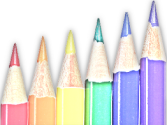The President's Cabinet
The President's Cabinet
Course(s)/Subject(s):Social Studies/Civics
Grade Level(s):8
Key Words:Social Studies, Technology, President's Cabinet
Developer(s) Name:Janice Crews
School:Carl Sandburg
Approximate Time Frame:one day of class time
Materials/Equipment Needed: create templates, computer for each student with Internet, printer
Description of Lesson (includes context):
In our examination of the Executive Branch, students learned the
importance of the President's Cabinet, each Cabinet member is the
head of one of the fourteen executive departments . For extra credit
on the test for the Executive Branch, students may list the
Secretaries, one point given for each correct Department Secretary.
The information about each Department will also be shared in class
prior to the test to facilitate understanding of the complexities of
the Executive Branch. In order to obtain this information, students
will go to the computer lab where they will pull up templates,
connect with the Internet (bookmarked sites), and explore the
Departments that comprise the Cabinet and put one Department on each
template. They will then read through the information on each
Department and put one important fact on each template along with the
name of the Secretary for that Department.
LESSON OUTLINE
- What is the objective of this lesson?
FCPS POS Standards:
8.2Students will know, understand, and explain the importance
of the political and
civic beliefs, values, and principles that support and maintain
American
constitutional government and the workings of their own and other
governments.
|
FCPS POS Benchmarks:
8.2.1Students will be able to identify and explain the
purpose, organization, and
powers of government in the United States.
8.5.2Students will be able to organize information in a variety of forms.
|
|
|||||||
Page 1 of 3
and judicial branches at each level.
|
8.5.3.b
8.5.3.d 8.5.6.a Determine the purpose, audience, and format for
speaking, working individually or in groups.
8.5.6.b C/T8.2,
EVIDENCE
- What will we examine as evidence of students' knowledge and/or skill?
Product(s): Print out of the President's Cabinet.
Performance(s): Students will share information about the 14 Departments with classmates.
Other:
DIRECTIONS
- What exactly will the students and teacher do during the lesson? There are 14 templates, one for each Cabinet member, students will go to the Internet and look up each Cabinet secretary and put one Secretary in each template. They will also enter one interesting fact about the Department and the Secretary of that Department.
Directions to students for proceeding with the lesson:
- Students will pull up the file with the 14 templates, save it
to their desktop, then
connect to the Internet using appropriate bookmarks. There they will find the 14
Departments that make up the President's Cabinet. - They will download the picture of each Department's Secretary to one of the templates.
- They will read about each Department and add at least one fact
about the Department to
the appropriate template. - They will add the name of the Secretary to the appropriate template.
- When they have completed all 14 Cabinet positions, they will print out their information
Page 2 of 3
to use in a classroom discussion of the Cabinet and also for use as extra credit on the test for the Executive Branch.
Directions to teacher/administrator using the lesson?
- In the computer lab, students will pull up templates, go to
the Internet
( http://www.ajkids. or other bookmarks, for example) and find the President's
Cabinet. - Students will download the picture of each Secretary, one for each template.
- They will then read about each Department, find one
interesting fact , include that on
template as well as the Secretary for that Department. - When students have completed all 14 Cabinet Departments, they
will print their
information.
APPROPRIATE ACCOMMODATIONS/MODIFICATIONS
- What options in presentation(s) and/or response(s) are suggested in order to provide the opportunity for all students to demonstrate achievement of the benchmark(s) and indicators.
Instead of presenting information orally, students turn in a
poster with all the appropriate
information.
Page 3 of 3

